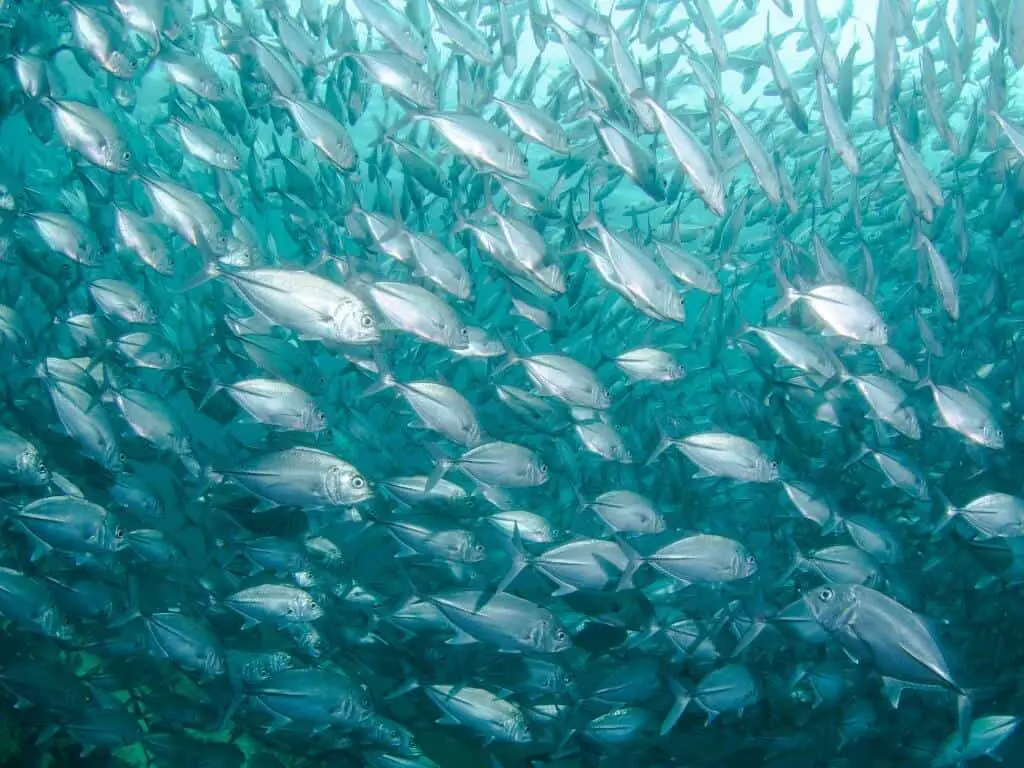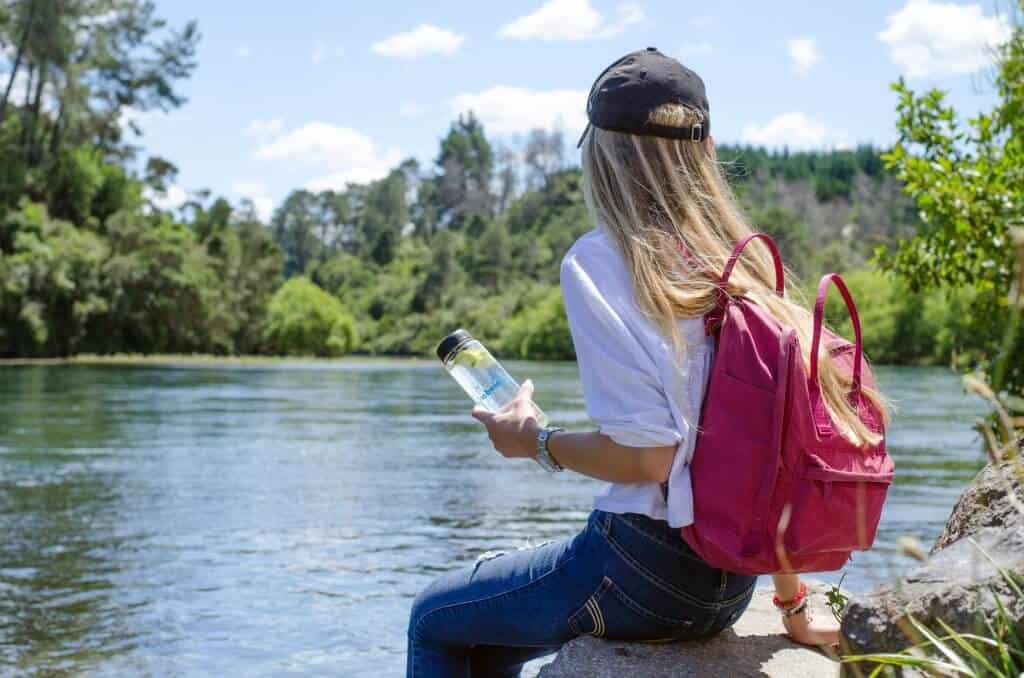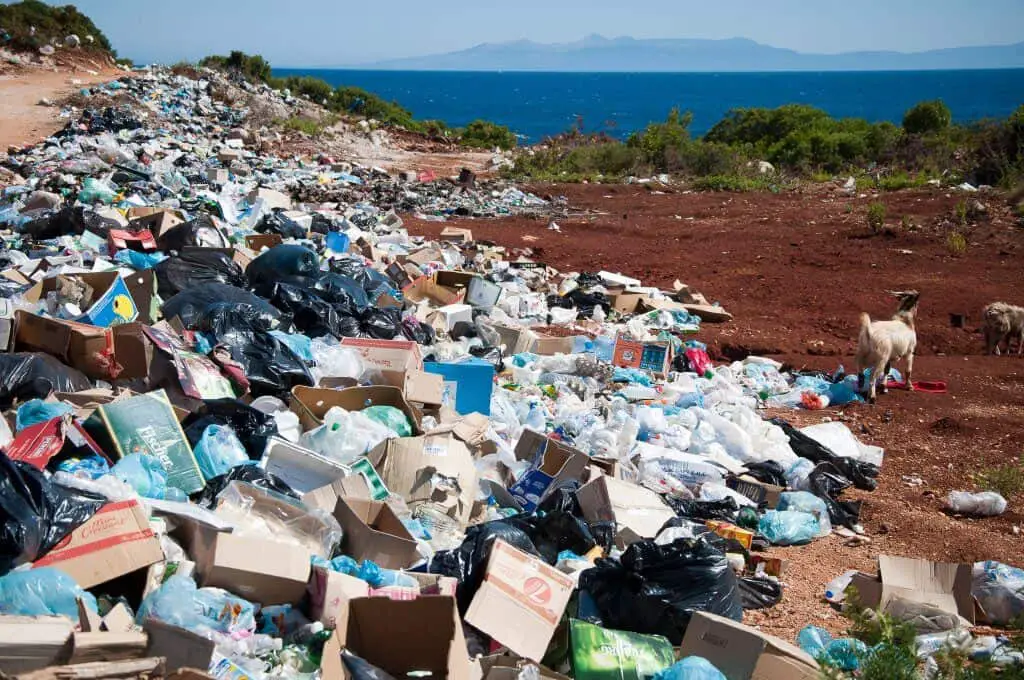A common question on this topic is “why does all of this matter?” and it is a fair question. Sometimes it is hard for us to see how things change until it is too late, and the phrase “there are plenty of fish in the sea” is unfortunately becoming less true over time due to overfishing, invasive species, and pollution.
It is tempting to think that the effects of declining fish populations are relegated to streams, lakes, and oceans but those effects can be felt throughout local ecosystems.
How Fishing Impacts the Environment
Why is it that you should care about sustainable fishing methods? Do you take pleasure in seeing a pristine waterway and landing record setting fish over and over? Would you prefer to dodge piles of plastic trash to find undersized fish few and far between? The choice is clear for all but the most masochistic anglers.
Now the question remains, what are things that the typical hobbyist can do that would have a real impact? The fish we can impact are like a single piece in a game of Jenga. The birds that rely on the fish are a piece, the plants on the river bank are one as well, and so are the mussels on the river bottom.
Each part of this Jenga tower is interconnected, and while it is possible for some pieces to be removed, you cannot accurately guess which one will bring the whole thing tumbling down.

Overfishing
Overfishing is defined several ways, but the easiest to understand is, “Catching too many fish; fishing so much that the fish cannot sustain their population. The fish get fewer and fewer, until finally there are none to catch”.
Throughout our history as humans, most have historically lived under the assumption that nature is limitless and there is no way to possibly deplete the things we see in front of us.
We know now after seeing species hunted to extinction, and forests cut never to return that our previous ways of thinking are obsolete. In most places, the amount of fish pulled from the water by fishing fleets is excessive, or the methods they use catch other unintended species as bycatch, like sea turtles and dolphins.
By removing too much of a type of fish, or removing other animals from the ocean we are disrupting the food chain, which can cause populations of animals to starve, or grow unchecked. These fishing fleets, often using techniques such as drag net fishing, and this mad grab for ocean resources does not happen on its own. It is driven by people wanting more and more seafood without caring about its environmental cost.
You may have supported the degradation of the ocean without realizing it the last time you ate fish for dinner. Obviously, you care because you are reading this, but all fish fillets look the same, how can you help you ask.
What Needs to Change
Fishing techniques and technology have changed over time. Thankfully over time more and more options are available to us. We are no longer relegated to trying to catch fish with our hands, and moving forward the selection will continue to get both wider and more specific.
Eliminate Single Use Plastics
While options for anglers are increasing, the amount of single use plastics should not have to increase as well. That means fewer delicate soft baits individually wrapped in cellophane. Even with the best of intentions for collecting your trash, a stray gust of wind is all it takes to foil those intentions. Between live bait, new lures, leaders, line, and other equipment you can easily generate dozens of pieces of plastic that generally cannot be recycled.
Having more reuseable packaging and containers is incredibly important. As unsightly as it is to see a pile of plastic washed on shore, that is still easier to deal with than the tiny pieces that break off and are eaten by baitfish.
Those fish may die from plastic bowel obstruction, or perhaps worse, pass on the digested and broken down parts of plastic through the food chain to larger fish and eventually humans. If you would not eat the plastic sleeve your leaders come in, I suggest finding a better means of packaging them, otherwise we may still end up eating that plastic in the end.

Use A Quality Line
Switching to higher test lines can be another great change. How many times have you had your line snap before? Not only is it disappointing, but now there are feet of line floating around for stuff to get tangled in.
Sometimes lures get snagged. Every year a public pond near me has a fishing derby aimed mostly at getting kids into the sport. Without fail all the low hanging tree branches are filled with snagged line to the point that it looks like a giant spiderweb.
Think of how frustrating that is for us humans, and we have the thumbs and tools to be able to fix that. The fish, gull, heron, or turtle that gets caught up in that do not stand a chance. Having a tougher line will not only make it more likely to land the monster at the end of your line, but it will also make it easier to negotiate snags and recover tackle.
Correct Usage of Live Bait
Not everyone is in love with artificial lures. I know many fisherman who only fish with live bait and swear by it. Unfortunately many of us no longer have a convenient bait shop around and have to rely on larger chain stores.
Not that there is anything wrong with chain stores, but they pride themselves on consistency and uniformity and they offer the same night crawlers imported from Canada, gizzard shad, and goldfish no matter where they are. Therein lies the issue, as not every species of fish is native to where they are being sold as bait.
The sustainable option here is not in refusing to use live bait, but instead using it all and not letting any go. The goldfish you let go in the lake out of pity can grow to be thirty pounds and spend decades gobbling up all the aquatic vegetation it can find.
That same aquatic vegetation that other species of fish you want to catch rely on. The accidental transportation of non-native species can lead to the scarcity of game fish and the eventual collapse of fisheries. And finally: Please refrain from snagging!
Sustainable Fishing Methods & Techniques We Can Start Using Today
Catch & Release Or Use It All
Some anglers want to taste the fruits of their efforts, and others just want pictures for proof of a good time. Whichever goal you are aiming for you can increase your sustainability. Slow growing species like grouper and alligator gar benefit more from catch and release because they can reach impressive size before they are mature enough to help repopulate.
Other fish like bass and catfish mature more quickly and have a less severe population decline from continuous fishing. Use
fishing pliers and/or fish lip grippers to remove the hook as fast and thorough as possible! Whatever fish you catch, if you choose to keep it, using the whole fish is a more sustainable option. Even if you end up using it for bait or chum it is still serving more of a purpose than rotting on the bank.
Eat Less Fish And If You Do Be Aware Of Where It Came From And How It Was Caught
Sustainable seafood is not only about eating less fish, but it is about realizing that not all fish fillets are created equal. Not only does the type of fish matter, but also how it was caught, and where it came from.
Salmon for example, you can buy salmon from the Atlantic and salmon from the Pacific. Each might be farmed or wild caught. Farmed fish are a tempting option, but these fish farms can pollute waterways with fish waste, introduce non-native species by accident, or destroy important habitats in order to build these farms.
Fish caught from the wild also has similar considerations with country of origin and longline vs trawler etc. It can be very confusing keeping track of each of those factors for all the species that you may find on a menu, so it is much easier to use guides like Monterey Bay Aquarium’s Seafood Watch Guide to make informed decisions.
Use Tackle Without Lead
In the relatively short period of time that each one of us handles lead tackle most likely will not harm the individual. All of that lead being introduced into the ecosystem and food web can cause a more substantial problem over the long term. When a fish swallows a lead sinker, or absorbs a small amount of lead from the water around it, that lead will not naturally drop out of their bodies.
As fish like bass, catfish, or tarpon eat contaminated bait fish that lead accumulates in them until they are either too toxic to be eaten or perish from lead toxicity themselves. While you may not wish to eat the fish that you catch and think that lead tackle is irrelevant, that does not mean it is okay to poison the meal of another fisherman.
Clean Waters
Use or continue to use organic fertilizers (animal/plant derived fertilizer), from an origin that you know. Whenever you are fertilizing, always make sure that you measure accurately and follow the directions given for the fertilizer.
Extra wasted fertilizer, aside from being a drain on your budget, can also run off into streams, rivers, and lakes creating harmful algae blooms.

Frequently Asked Questions (FAQ)
What else can I do to help preserve the marine ecosystem?
Focus on changes that you can make individually for a more sustainable future. Sustainability is a process, not a destination. Things like mitigating chemical run off from your driveway or lawn as well as making sure plastic from your home does not make its way into the ocean.
Additionally, consider using fish scraps as a way to create organic fertilizer!
How can I learn more about my native species of fish?
Your state fish and wildlife office or county extension should have some informative publications that list and describe the game fish in your state as well as any catch limits or size restrictions you will need to follow.
Does it make a difference if I fish in fresh or salt water?
No. All water seeks the sea, so even if you do not live by the ocean it is still our responsibility to make sure the sea as well as the fish we eat from it remain clean and safe.
What should I do with broken lures and tangled line?
The first and best choice is pick them up and throw them away securely (so that the trash can does not tip and spill everything again).
If you are more concerned about sustainability with disposing of your plastic waste contact your waste disposal company or county administrators to ask about recycling programs in your area or waste amnesty days.
What should I do if I see wildlife tangled in discarded tackle?
Don’t be a fool and put yourself in danger to try and catch and animal that may be in pain and jumpy around people. Try to take some photos if possible and if the animal looks like it is in need of veterinary help, call your state fish and wildlife department for the nearest wildlife rehabilitator. Not all vets are able to help all kinds of native animals.
Do Your Part!
Sure, fishing is better than hunting. If you are reading this, you likely enjoy fishing and want to continue doing it yourself, or you would want future generations to enjoy incredible experiences like you did. That may not be possible without many people doing little things more sustainably each time they go out fishing in order to preserve the possibility of those experiences.
Most things are not hard, like picking up your trash, choosing to buy more durable tackle or teaching kids to fish responsibly. Some things can be more difficult, like following guides about sustainable seafood or memorizing which fish species are native to your area.
All of these things end up making us better anglers in the end because you cannot spend as much time reading the water and enjoying the outdoors as we do without being invested in the natural world.